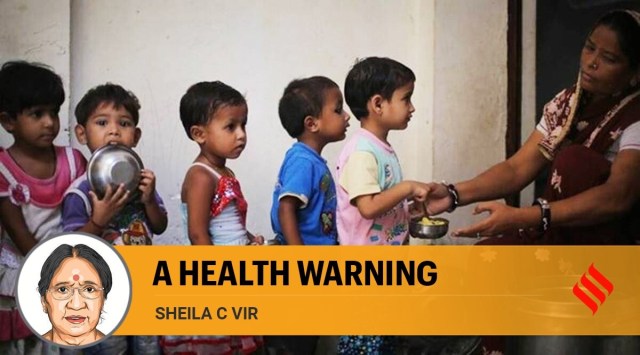
In a study published in June in the American Journal of Clinical Nutrition, researchers from leading nutrition institutes in the country argued that the government’s National Vitamin A Supplement (VAS) programme should be discontinued in all except seven states — Bihar, Jharkhand, Mizoram, Telangana, Haryana, Madhya Pradesh and Uttar Pradesh. Such a move will be ill-advised. It would deprive children between six months and five years of the supplement and it may adversely impact optimum immune responses against diseases, lead to re-emergence of eye damage and blindness caused by nutritional deficiencies as well as adversely impact the ongoing anaemia control measures.
The VAS programme, introduced in 1970 and modified in 1991, is based on the rationale that the daily diet of children in the country is deficient in this essential nutrient. The human diet has two forms of this vitamin: A precursor of vitamin A, or B-carotene, present in yellow and green vegetables and fruits and an active form of vitamin A found in food items sourced from animals such as milk, butter, eggs and meat products. Surveys undertaken over the years by the National Nutrition Monitoring Bureau (NNMB) have confirmed that over 70 per cent children consumed less than 70 per cent of the recommended level of this vitamin. They have also revealed that over 80 per cent of children in the age group of 1-3 years consumed less than 50 per cent the recommended amount of milk as well as oils and other types of fats. The findings of the Comprehensive National Nutrition Survey (CNNS), 2016-19, re-confirmed the low dietary intake of vitamin A-rich foods. Among children aged 2 to 4 years, only 5 per cent consumed vitamin A-rich fruits and vegetables. Eggs and meat products were the least commonly consumed food groups. A predominantly vegetarian diet combined with frequent intestinal infections, and/or chronic inflammation reduces absorption or increases catabolism that contributes to vitamin A depletion.
The policy, “Management of Vitamin A Deficiency”, introduced in 1991, was guided by the findings of the National Institute of Nutrition, ICMR, that reported the seroconversion of measles vaccine in field conditions was significantly higher in children who had taken a vitamin A supplement as compared to those who did not. With the introduction of the biannual strategy for administering six-monthly vitamin A dose in early 2000, VAS coverage increased from 20.3 per cent in 2005-6 to 62 per cent in 2015-16 in children in the age group of two to three.
With high priority being accorded to building optimum immunity in young children who are yet to be vaccinated against Covid-19, the implications of discontinuing VAS could be devastating.
The haste to shift to a “targeted” approach is based on a fear of hypervitaminosis — abnormally high levels of vitamins that can cause toxicity. Neither the CNNS or the NIN survey has reported hypervitaminosis cases. A scientifically sound state/UT survey of biochemical parameters of VAD along with data on peoples’ diets is required and there is a need to build consensus amongst experts.
This column first appeared in the print edition on September 26, 2021 under the title ‘A health warning’. The writer is director, Public Health Nutrition and Development Centre